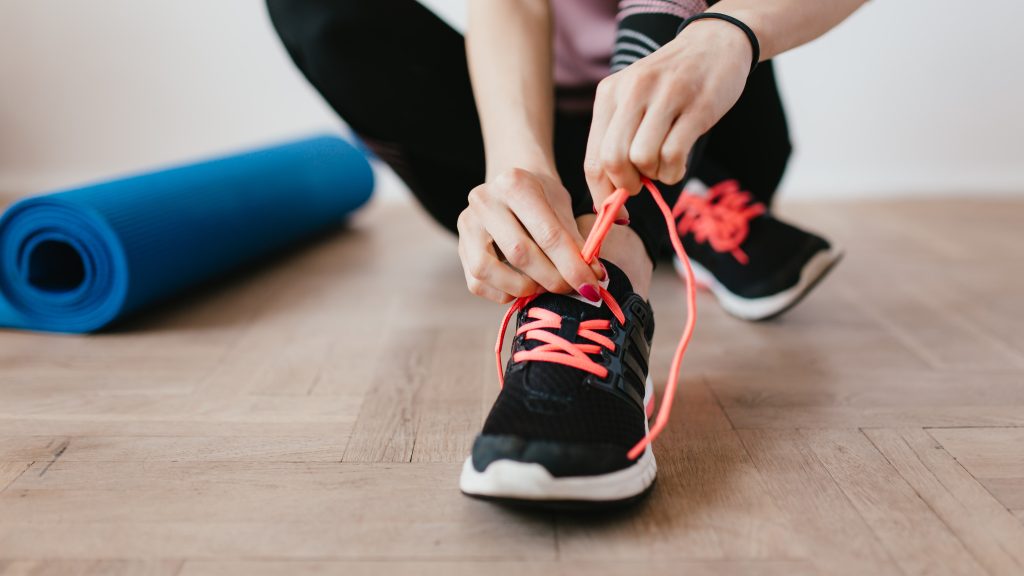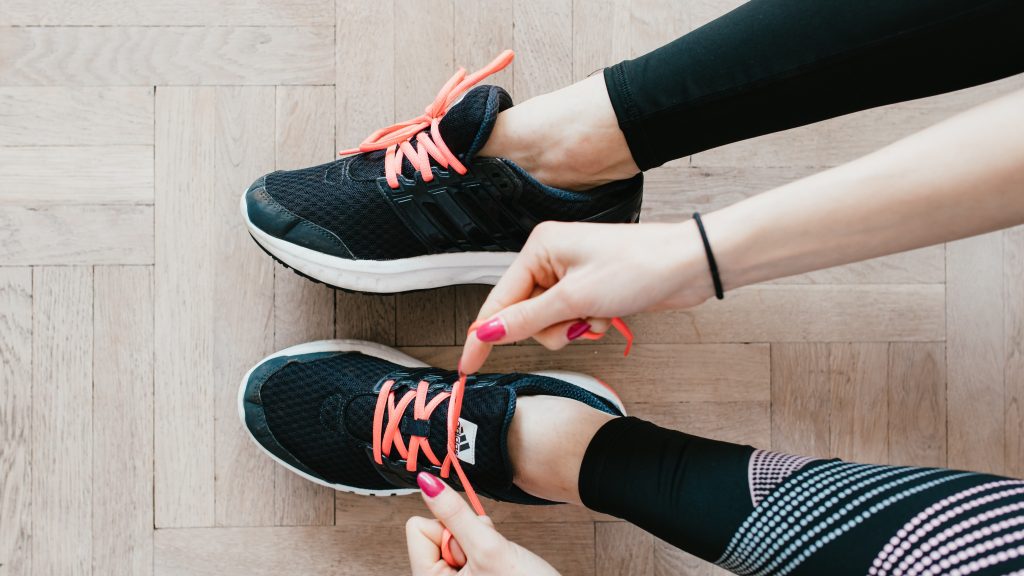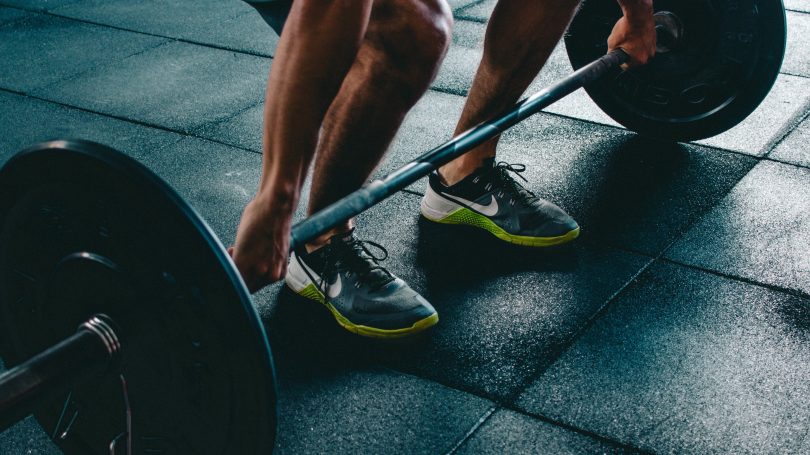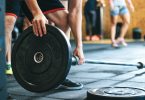Introduction:
When it comes to exercise, selecting the right workout shoes is crucial for optimizing performance, preventing injuries, and ensuring overall comfort. In this comprehensive guide, we will explore the key factors to consider when choosing workout shoes, covering various types of exercises. Whether you’re into running, weightlifting, or high-intensity interval training (HIIT), this article “Choosing the Right Workout Shoes: Maximizing Performance for Every Exercise” will help you make informed decisions to enhance your workout experience.
-
Assess Your Exercise Routine:
Before diving into the specifics, evaluate your exercise routine to determine the types of activities you engage in regularly. Consider the following factors:
- Impact level: Does your workout involve high-impact activities like running or jumping, or is it low-impact, such as yoga or Pilates?
- Surface type: Are you primarily exercising indoors on gym floors or outdoors on trails or pavement?
- Frequency and duration: How often and for how long do you engage in your chosen exercise activities?
-
Understand Foot Pronation:
Understanding your foot pronation type is essential for selecting the right workout shoes. The three main types are:
- Neutral pronation: The foot rolls slightly inward to distribute the impact evenly.
- Overpronation: The foot excessively rolls inward, placing stress on the arch and ankle.
- Underpronation (supination): The foot rolls outward, transferring most of the impact to the outer edge.
Identifying your pronation type will help you choose shoes with appropriate support and stability.
-
Consider Shoe Types for Different Exercises:
a) Running Shoes:
- Cushioning: Look for shoes with ample cushioning to absorb shock and provide comfort.
- Stability: Overpronators should opt for stability shoes, while neutral pronators can choose neutral cushioned shoes.
- Traction: Consider the outsole design to ensure reliable grip on different surfaces.
b) Cross-training Shoes:
- Versatility: Select shoes designed for multidirectional movements, providing stability and flexibility.
- Support: Look for a supportive midsole and cushioning to handle various exercises.
- Durability: Choose durable materials to withstand lateral movements and quick direction changes.
c) Weightlifting Shoes:
- Heel height: Weightlifting shoes typically feature a raised heel to improve ankle mobility and maintain proper form.
- Stability: Opt for shoes with a wide and flat outsole for enhanced stability during heavy lifts.
- Support: Look for a secure fit and solid construction to support heavy loads.
-
Try Shoes Before Buying:
Visit a specialized store to try on different brands and models. Consider the following aspects:
- Fit: Ensure the shoes are snug but not too tight, allowing for some toe movement.
- Comfort: Walk or jog in the shoes to gauge their overall comfort and cushioning.
- Flexibility: Check if the shoes flex at the right points, providing adequate support during your exercises.
- Arch support: Look for shoes that provide appropriate arch support for your foot type.
-
Replace Shoes Regularly:
Regularly assess the condition of your workout shoes to determine when it’s time for a replacement. Factors to consider include:
- Mileage: Running shoes should typically be replaced after 300-500 miles, while other shoes may last longer.
- Wear and tear: Inspect the outsole, midsole, and upper for signs of excessive wear, fraying, or damage.
- Loss of support: If you feel decreased stability or discomfort during exercises, it may be time for new shoes.
-
Consider Breathability:
If your workouts involve intense activities that make you sweat, look for shoes with breathable materials. Proper ventilation helps prevent moisture buildup, keeping your feet dry and reducing the risk of discomfort or fungal infections.

Photo by Karolina Grabowska: https://www.pexels.com/photo/crop-young-sportswoman-tying-shoelaces-on-sneakers-4498555/
Additional Tips for Choosing the Right Workout Shoes:
-
Take Into Account Shoe Weight:
The weight of your workout shoes can impact your performance, especially for activities that involve agility or quick movements. Lighter shoes can enhance your speed and agility, while heavier shoes may provide more stability and support for weightlifting or strength training.
-
Look for Impact Absorption:
For exercises that involve jumping or high-impact movements, prioritize shoes with effective shock absorption capabilities. This feature can help reduce stress on your joints, particularly in the knees and ankles, minimizing the risk of injuries.
-
Seek Professional Advice:
If you have specific foot conditions, such as flat feet, high arches, or plantar fasciitis, it’s advisable to consult with a podiatrist or sports specialist. They can provide valuable insights and recommend shoe features that cater to your unique needs, ensuring optimal comfort and support.
-
Consider Brand Reputation and Reviews:
Research reputable shoe brands known for their quality and performance. Read customer reviews and ratings to gain insights into the durability, comfort, and overall satisfaction of other users. Reliable brands often invest in research and development, incorporating the latest technologies to improve workout shoe performance.
-
Prioritize Comfort over Style:
While it’s natural to consider the aesthetic appeal of workout shoes, remember that comfort and functionality should take precedence. Prioritize shoes that provide the necessary support and cushioning for your specific exercises, even if they may not be the most stylish option.
-
Don’t Forget Socks:
Pairing your workout shoes with appropriate socks is equally important. Choose moisture-wicking socks that offer cushioning and help prevent blisters. Avoid cotton socks, as they can retain moisture and increase the risk of discomfort and friction-related issues.

Image by Anastasia Shuraeva: https://www.pexels.com/photo/woman-running-on-a-treadmill-4944978/
-
Consider Budget and Value:
While it’s important to prioritize quality and functionality, it’s also essential to consider your budget. Determine a reasonable price range for workout shoes based on your needs and preferences. Look for options that offer the best value for your investment, considering factors like durability, performance, and long-term comfort.
-
Test Different Shoe Models:
If possible, try out multiple shoe models within the same category to compare their fit, comfort, and performance. Each person’s feet are unique, and what works for someone else may not work for you. Testing different models can help you find the one that suits your feet and exercise routine the best.
-
Gradually Transition to New Shoes:
When you find a new pair of workout shoes, allow your feet and body to adjust to them gradually. Start by wearing them for shorter periods during low-impact exercises and gradually increase the duration and intensity. This helps prevent discomfort and potential injuries that may arise from sudden changes in footwear.
-
Maintain and Clean Your Workout Shoes:
To extend the lifespan of your workout shoes, properly maintain and clean them. Follow the manufacturer’s instructions for care and cleaning. Regularly remove dirt and debris, allow them to air dry, and store them in a cool, dry place. Proper maintenance ensures optimal performance and durability.
-
Stay Informed on Latest Innovations:
The fitness industry is continually evolving, and new advancements in workout shoe technology may emerge. Stay informed by reading fitness magazines, blogs, and reputable websites to stay updated on the latest trends and innovations in workout footwear. This knowledge can help you make informed decisions when it’s time to replace your current shoes.
-
Listen to Your Body:
While choosing the right workout shoes is essential, it’s equally important to listen to your body’s signals during exercise. Pay attention to any discomfort, pain, or unusual sensations in your feet, ankles, or legs. If you experience persistent discomfort or pain, consult a healthcare professional for an evaluation.
-
Explore Customization Options:
If you have unique foot characteristics or specific needs, consider exploring customization options for workout shoes. Some brands offer customization services where you can personalize aspects such as arch support, cushioning, or shoe width to ensure a perfect fit and enhanced performance.

Photo by Victor Freitas: https://www.pexels.com/photo/person-lifting-black-and-gray-metal-barbell-1092877/
-
Consult with Fitness Professionals:
If you’re unsure about the right type of workout shoes for your specific exercise routine or goals, consider seeking guidance from fitness professionals, such as personal trainers or coaches. They have expertise in understanding the demands of different exercises and can provide valuable insights and recommendations based on your individual needs.
-
Keep a Shoe Journal:
Maintaining a shoe journal can be helpful, especially if you engage in various types of exercises or own multiple pairs of workout shoes. Keep track of the shoes you wear for each activity, note down your experiences, and monitor any changes in comfort, performance, or durability. This information can guide your future shoe purchases and help you identify patterns or preferences over time.
-
Consider Transitional Shoes:
If you’re transitioning from one exercise activity to another, such as moving from running to weightlifting, you might consider transitional shoes. These shoes are designed to bridge the gap between different types of exercises, providing a balance of features that cater to both activities. They can be a practical option when you’re exploring new fitness pursuits.
-
Pay Attention to Shoe Drop:
Shoe drop refers to the height difference between the shoe’s heel and forefoot. Different exercises may require varying shoe drops to optimize performance and reduce strain on specific muscle groups. For instance, running shoes often have a higher drop to encourage forward motion, while weightlifting shoes typically have a lower drop to maintain stability during lifts. Consider the appropriate shoe drop for your chosen activities.
-
Don’t Forget about Children’s Shoes:
If you have children who participate in sports or engage in physical activities, it’s crucial to choose the right workout shoes for them as well. Ensure that their shoes offer adequate support, cushioning, and stability for their specific activities and foot development. Children’s feet are still growing, so regular assessment and replacement of their workout shoes are necessary.
-
Regularly Reassess Your Shoe Needs:
As your exercise routine evolves, it’s important to reassess your shoe needs periodically. Your workouts may change, your foot pronation may shift, or you may have new goals and aspirations. Stay attuned to any changes in your body, exercise habits, or preferences, and adjust your shoe choices accordingly.
-
Consider Minimalist Shoes:
For those interested in barefoot-style training or minimalist approaches to exercise, minimalist shoes may be worth exploring. These shoes provide a minimal level of cushioning and support while promoting natural foot movement and proprioception. However, it’s crucial to transition gradually into minimalist shoes to allow your feet and muscles to adapt.
-
Look for Reflective Elements:
If you often exercise in low-light conditions or during nighttime, consider workout shoes with reflective elements. These features enhance visibility and safety, allowing others to see you more easily. Look for shoes with reflective strips or materials integrated into the design.
-
Check for Toe Protection:
Certain activities, such as hiking or obstacle course training, may require additional toe protection. Look for workout shoes that offer reinforced toe caps or overlays to shield your toes from impact or accidental bumps, ensuring enhanced safety during rugged or challenging workouts.
-
Consider Water-Friendly Shoes:
If you participate in water-based activities like aqua aerobics or water sports, opt for workout shoes specifically designed for water environments. These shoes are typically made from quick-drying materials, have excellent traction on wet surfaces, and provide drainage features to prevent water from accumulating inside.
-
Follow Manufacturer Guidelines for Shoe Lifespan:
Different workout shoes have varying lifespans based on their construction and usage. Follow the manufacturer’s guidelines for the recommended lifespan of your specific shoes. Even if they may still look good externally, the cushioning and support may have deteriorated, reducing their effectiveness. Replace your shoes as recommended to maintain optimal performance and reduce the risk of injuries.

Image by Karolina Grabowska: https://www.pexels.com/photo/unrecognizable-young-sportswoman-tying-sneakers-on-floor-4498571/
Conclusion:
In conclusion, selecting the right workout shoes is crucial for maximizing performance, preventing injuries, and ensuring overall comfort during exercise. By following the comprehensive guide provided, you can make informed decisions based on factors such as your exercise routine, foot pronation, and specific needs. Consider aspects like cushioning, support, stability, breathability, and durability when choosing workout shoes for different types of exercises.
Remember to assess your exercise routine, understand your foot pronation, and consider the specific shoe types that cater to your activities, whether it’s running, cross-training, or weightlifting. Trying on shoes before purchasing, gradually transitioning to new shoes, and seeking professional advice when needed are additional steps that can help you find the perfect fit. Pay attention to factors like customization options, budget, and value, and stay informed about the latest innovations in workout shoe technology.
Maintaining and cleaning your workout shoes, replacing them regularly, and listening to your body’s signals are essential for long-term comfort and performance. Keep in mind that everyone’s feet are unique, so what works for others may not work for you. It’s important to prioritize comfort, support, and functionality over style and consider customization options if needed.
By investing time and effort in choosing the right workout shoes, you are investing in your health and fitness journey. The right shoes will enhance your performance, reduce the risk of injuries, and provide the necessary support and stability for your specific exercises. Stay informed, regularly reassess your shoe needs, and remember to prioritize your comfort and safety throughout your fitness pursuits.
Whether you’re a seasoned athlete or just starting your fitness journey, finding the right workout shoes will play a significant role in maximizing your potential and ensuring a comfortable and enjoyable experience. So lace up, step out, and conquer your fitness goals with confidence and support from the perfect pair of workout shoes.
Keywords:
Choosing the Right Workout Shoes, Maximizing Performance, Exercise Routine, Foot Pronation, Impact Level, Surface Type, Frequency and Duration, Shoe Types, Running Shoes, Cushioning, Stability, Traction, Cross-training Shoes, Versatility, Support, Durability, Weightlifting Shoes, Heel Height, Stability, Support, Try Shoes, Fit, Comfort, Flexibility, Arch Support, Replace Shoes, Mileage, Wear and Tear, Loss of Support, Budget, Value, Customization Options, Fitness Professionals, Shoe Journal, Transitional Shoes, Shoe Drop, Children’s Shoes, Regularly Reassess, Minimalist Shoes, Reflective Elements, Toe Protection, Water-Friendly Shoes, Manufacturer Guidelines, Conclusion.
For more please Click Here.








